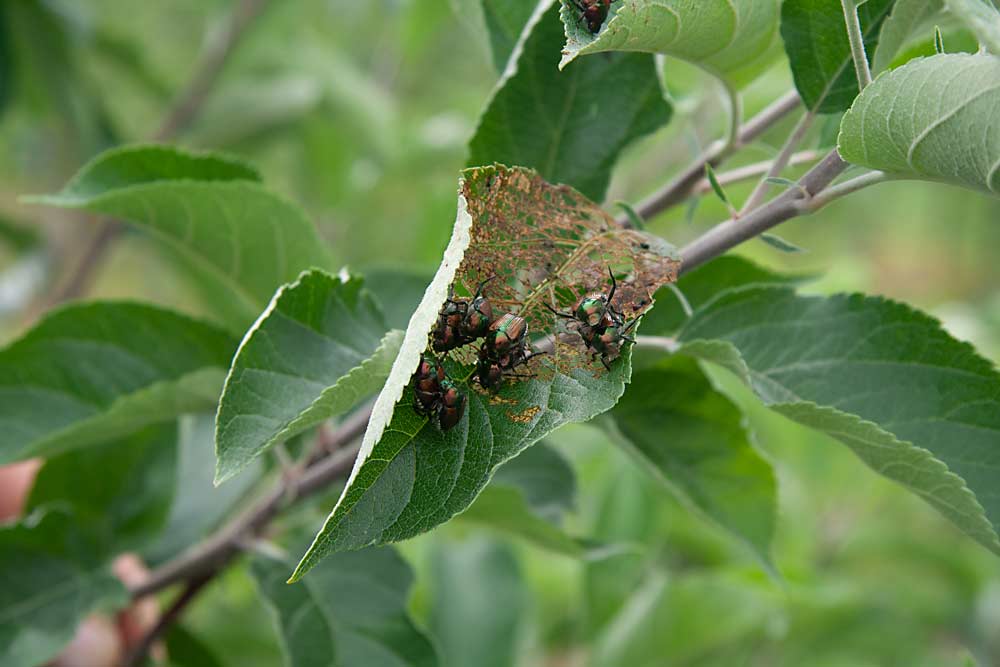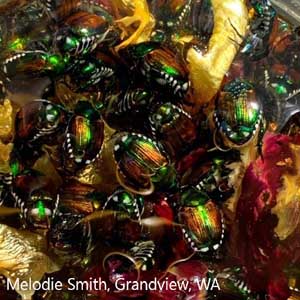
The Japanese beetle, an invasive pest, was recently detected in the Yakima Valley, and the Washington State Department of Agriculture is urging the public to report sightings.
Japanese beetle, Popilla japonica, is a pest of over 300 plants, including roses, hops, grapes and tree fruit. If established in Washington, the pest would have serious trade and economic impacts, according to a news release from the WSDA.
Last year, WSDA caught three Japanese beetles in traps in the Sunnyside and Grandview area and began to develop plans for more extensive trapping this year, to inform an eradication strategy for 2022, according to agency spokeswoman Karla Salp. Then, in March, a Grandview resident shared photos of dozens of Japanese beetles devouring her rose bushes last summer.

That tipped off the WSDA that there’s a larger population than they previously suspected, Salp said, but it’s too late in the year for the agency to plan and get approval for an eradication effort.
“So, we’re trying to get the word out to do self-treatment until we can do full trapping and make a plan to do an eradication project next year,” she said.
Concerned homeowners and growers can tune in for a webinar the WSDA will host on April 1 at 9 a.m. Register online at https://agr.wa.gov/beetles. Salp said this webinar will be more focused on the homeowner audience, and a webinar focused on the commercial industry is being planned for later in April.
“Roses are their favorite, but they will eat so many things we grow here in Washington state,” Salp said. “It’s a big concern to the nursery industry and a big concern for exports.”
While the pest is well established across the Eastern U.S., a federal Japanese beetle quarantine is in place to protect the Western U.S., covering Washington, Oregon, California, Arizona, Colorado, Idaho, Montana, Nevada and Utah.
“The most important thing out of all of it is if people do see them, they report them to us,” she said, adding that even reports from sightings last summer are helpful. “We need to know where they are.”
The adult beetles are just under a half-inch long and have a shiny green body with bronze wings. Adults feed on leaves, resulting in leaf skeletons, in the late spring and early summer. Larvae overwinter in the roots of host plans or in the lawn.
WSDA plans a more extensive trapping approach in the coming months, and — taking a page from the Asian giant hornet eradication efforts in Northwest Washington — the agency is encouraging residents to set up their own traps and report their catch results, Salp said.
Specific Japanese beetle traps, which have a rose-scented lure, are available online and will likely soon be available from local hardware stores, she added.
Sightings can be reported online at https://agr.wa.gov/beetles, by calling 1-800-443-6684 or by email at pestprogram@agr.wa.gov.
—by Kate Prengaman






Leave A Comment